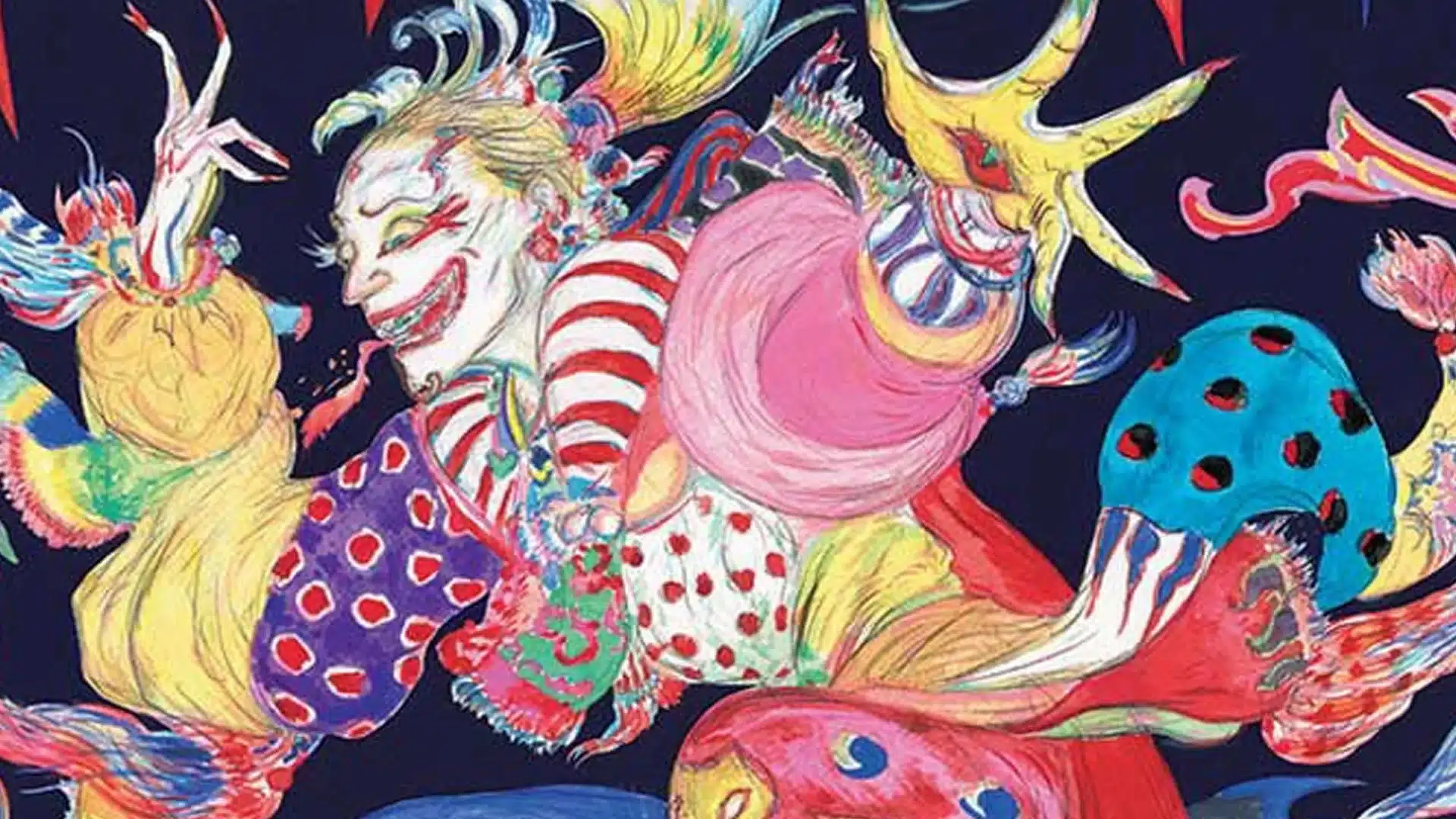At long last, MTG’s hugely anticipated crossover with Final Fantasy is finally here! Spoiler season is upon us, and cards are hitting the internet at lightning speed. From Cids to Sunmons, Final Fantasy is bringing all kinds of new cards to Magic: The Gathering.
To say that the Final Fantasy debut at PAX East was loaded with content would be putting it lightly. Thankfully, we’re here to make sure that you didn’t miss anything, as we’ve got many of the most exciting new reveals right here.
Kefka, Court Mage
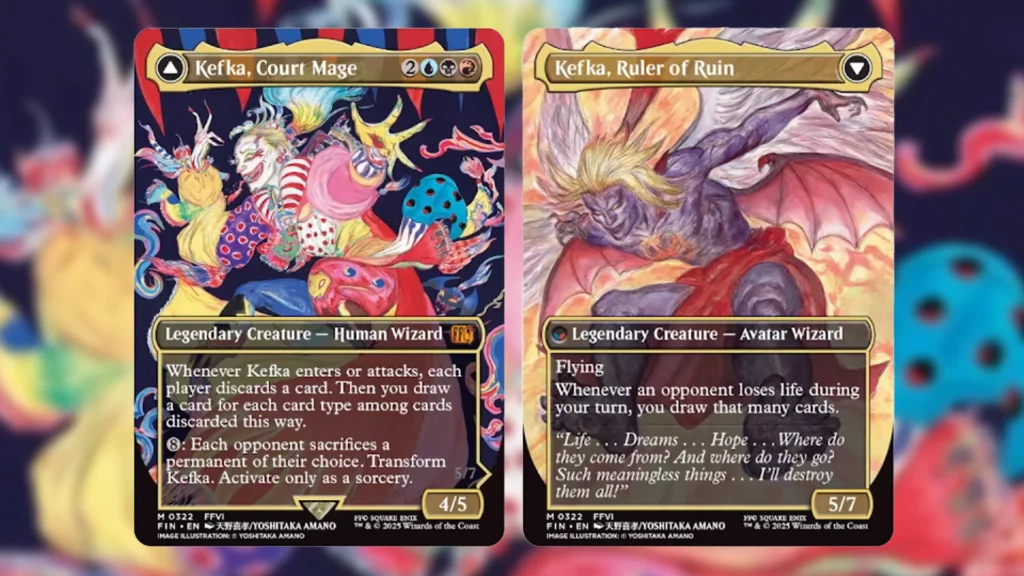
Kefka is one of the most infamous characters in the entire Final Fantasy series. Hailing from Final Fantasy VI, Kefka is one of the few villains in any story that actually manages to win. He is, of course, vanquished in the end, however.
Because Kefka does win round one, Final Fantasy VI is told in two parts, which lends quite well to Kefka’s double-sided nature. On the front side, his Court Jester version creates tons of value on entry and attack. You’ll generally draw two cards in the exchange while your opponents lose resources.
Kefka requires tons of mana to transform, but if you manage to do so, you get to rule a ‘ruined world,’ similar to when Kefka wins in Final Fantasy VI. All of your opponents are forced to part with a permanent, and you get to refill your hand while gaining an even more powerful monster. Notably, Kefka does not gain summoning sickness when you transform, making this look a bit better than anticipated. That said, we don’t expect Kefka to reign over competitive play. Commander, on the other hand, looks like a great home for this fan-favorite.
The Darkness Crystal

Moving back to Final Fantasy III, The Darkness Crystal is part of a larger cycle of cards that will appear in Final Fantasy. Every color will have a Legendary Artifact representing a corresponding Crystal. Each of those, like the Darkness Crystal, will reduce the mana required to cast a spell in its appropriate color by 1, and will cost four mana – two of the color of choice, but the rest is unique to each Crystal.
Representative of its sinister nature, The Darkness Crystal, will not allow your opponent’s creatures to rest. Profiting from their demise, the Crystal returns the creatures to your side for a heavy cost, but a little warped and stronger than before.
This is an incredibly flavorful nod, but as far as the card itself goes, The Darkness Crystal’s mana value and activated ability are a bit too expensive to be exciting.
Kain, Traitorous Dragoon

A fan-favorite character from Final Fantasy IV, Kain, Traitorous Dragoon’s abilities clearly represent his… unreliable nature in the game. The moment he betrays you when fighting against Gomez is one of the most impactful moments his character has. Now, Kain can betray multiple players over and over again.
The reward for his betrayal, however, is powerful. In exchange for some life, you get to generate both mana and cards! Combine Kain with something like Homeward Path, and you have an incredibly strong Commander engine.
Aerith Gainsborough

Travelling to Final Fantasy VII, Aerith Gainsborough is a new ally for lifegain decks everywhere. Outside of that theme, Aerith is disappointingly unimpressive but flavorful, even if it’s painful. If you can dump a ton of +1/+1 counters on Aerith, she could be a good addition to your Commander deck.
Tifa Lockheart
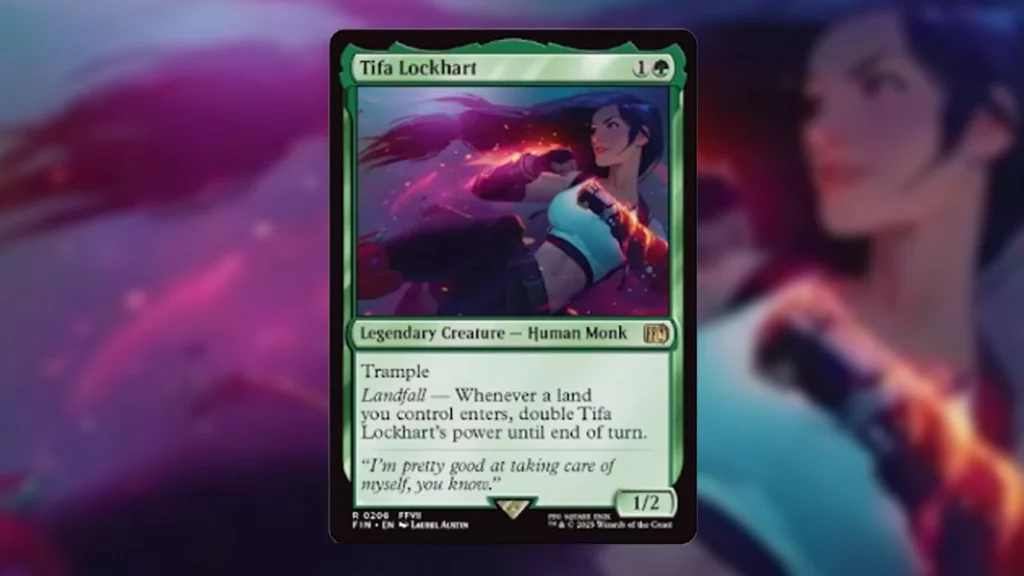
Notably, Tifa has both a Commander and a Standard variant. This specific Tifa Lockheart hails from the main set, as you can see from the card’s set symbol.
Tifa may not look too impressive at first glance, but she is capable of dealing a monstrous amount of damage. If you include this in a deck with multiple land drops and some power-buffing effects, it’s not too difficult for this two-drop to start one-shotting players. Doubling power exponentially is really scary in the right build. This card will either define formats or do absolutely nothing.
Squall, SeeD Mercenary

Squall prefers to do things alone, which is represented by his card rather well. If Squall gives himself Double Strike and manages to connect with an opponent, he can bring two things back from the dead. In every other instance, however, Squall is mediocre.
Squall needs too many things to go right to create meaningful value. Squall notably needs to connect with an opponent, which means a chump block stops Squall from doing much of anything. For this card to see Constructed play, the Double Strike trigger needs to be incredibly valuable. Otherwise, Squall might just appear in Commander.
Rinoa Heartily

Rinoa is not exciting from a mechanical perspective, but the Angelo Cannon reference is incredible. This will likely be a chase uncommon for the Selesnya archetype in Limited, and could see play in some go-wide Commander decks.
Kuja, Genome Sorcerer
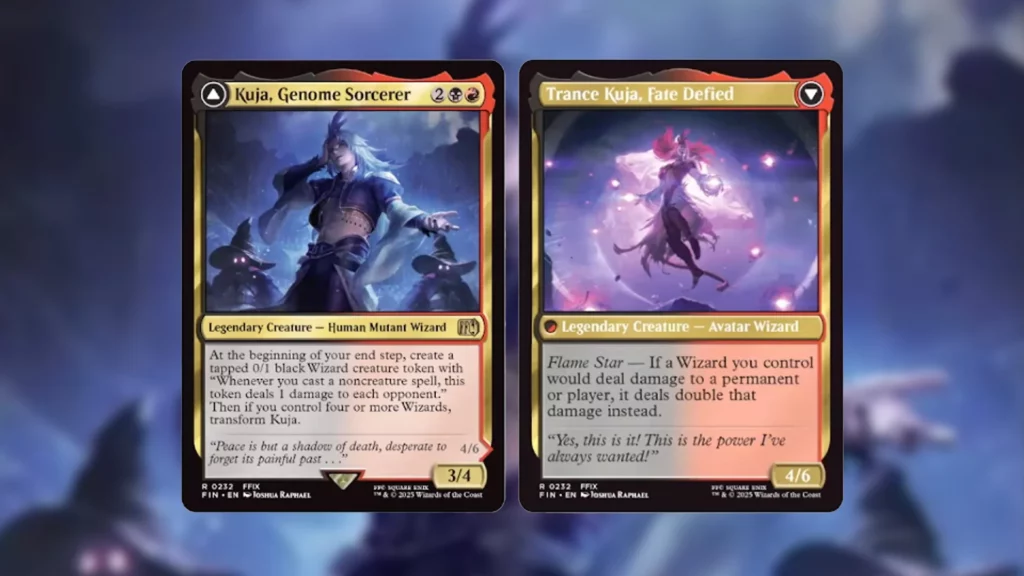
Besides being a hallmark card in the Rakdos Draft archetype, Kuja is an interesting card for Spellslinger Commander decks. The value this card creates is too slow for constructed, but the card is capable of doing serious damage in Wizard Typal decks. Transforming Kuja grants a damage-doubling effect, a Commander favorite.
This seems too win-moreish to actually be good, but flashy effects like this are fun in Commander.
Vivi Ornitier

Vivi Ornitier is an interesting new addition for Izzet spellslinger decks. This card will also be rewarded as a promo for some MTG Arena preorder packages.
As far as their application goes, Vivi has potential. If you can charge up her power, you can generate a ton of mana with this Wizard. Vivi naturally becomes stronger every time you cast an Instant or Sorcery. In the right deck, Vivi snowballs out of control really quickly. Even generating one mana for a cantrip can really increase your momentum with this card.
The question will ultimately be if you can consistently generate enough value fast enough to warrant Vivi. If you can, Vivi is worth it. If not, Vivi might be relegated to Commander, but this card will be an absolute monster in that format.
Absolute Virtue

Final Fantasy XI’s hardest boss battle has arrived, and Absolute Virtue is just as difficult to deal with in MTG as he is in Final Fantasy. This creature can’t be countered, and it gives you protection from all opponents. This basically means that you won’t be able to die through conventional means until Absolute Virtue is taken care of.
Unfortunately, this means that Absolute Virtue dies to a gentle breeze. This makes the card borderline unplayable outside of some excessive gimmicks. It would have been more flavorful for Absolute Virtue to have Protection from Opponents itself – a much more flavorful nod to the card.
Balthier and Fran

Balthier and Fran has the potential of creating some explosive plays with Vehicles, but you need a lot of resources to pull this off properly. As a result, this is likely another MTG Final Fantasy card that’s going to function best in Commander.
Creating additional combats is incredibly powerful but needing to Crew one with Baltheir and Fran, and pay three mana, is a lot of requirements for Standard. That ultimately means you would need to curve a two-mana vehicle into this pair and have them survive for a turn. That’s a lot to ask for in a format filled with spot removal.
Lightning, Army of One

Lightning, Army of One is another card that creates massive, scaling value, but doesn’t really do that on her own. Stagger is a nice reference to her Final Fantasy XIII toolkit, creating a sort of delayed value. Unfortunately, this also means Lighting needs other damage sources to cash in.
This is another card that easily excels in Commander, and it could be good enough to see Standard play. Lightning is quite deadly in combat, and any damage effects played after she connects is doubled. Two toughness is really bad in a Prowess format, however. This could stop her from seeing significant progress.
Zodiark, Umbral God

For five black mana, Zodiark, Umbral God is a beating. This immediately takes control of the board and becomes a difficult card to deal with. Unfortunately, this card’s mana value may make it difficult for it to see play. Mono-Black is a decent deck in multiple formats, however, which gives Zodiark a chance.
This is, in theory, a great catch-up tool for Mono-Black midrange against faster strategies. The card is basically impossible for those decks to deal with thanks to being Indestructible. This has more constructed potential than many of the cards on this list.
Cloud, Midgar Mercenary

Cloud, Midgar Mercenary is an auto-include for any Standard and Commander equipment decks. This card does a ‘Stoneforge Mystic at home’ impression, searching up an Equipment from your deck. Cloud may not be able to cheat anything in, but he does trigger the effects of anything equipped to him an additional time. Cloud will need the right equipment to flourish in constructed, but this is fantastic in a Captain America Commander deck.
There is a Buster Blade in the set that should synergize quite well with Cloud, but as of the writing of this article, we haven’t seen it yet.
Firion, Wild Rose Warrior

Firon from Final Fantasy II is the master of all swords. Considering this, having his card interact with equipment is flavorfully satisfying. Creating additional copies of equipment, Firion can essentially grant free, temporary buffs to creatures when paired with the right equipment. Granting Haste is a nice touch, but Firion, once again, requires a lot of resources for this particular line of text to generate value. You need to be playing creatures and equipping them in the same turn.
Thanks to Equipment’s unimpressive functions in Magic, this is another card that might only see play in Equipment matters Commander decks.
Gilgamesh, Master-at-Arms

Hailing from Final Fantasy V, if any MTG Final Fantasy card makes equipment viable, it’s this one. Gilgamesh has the potential to pull tons of equipment out of your deck and into play. He can even equip everything to himself on impact.
Gilgamesh offsets all of the downsides to playing equipment, and can create tons of value. Six mana is a lot, but Gilgamesh is worth it. Unfortunately, that combined with the cost of running equipment to make Gilgamesh work could rule it out of constructed. In Commander, however, Gilgamesh can do a ton of work.
Noctis Prince of Lucis
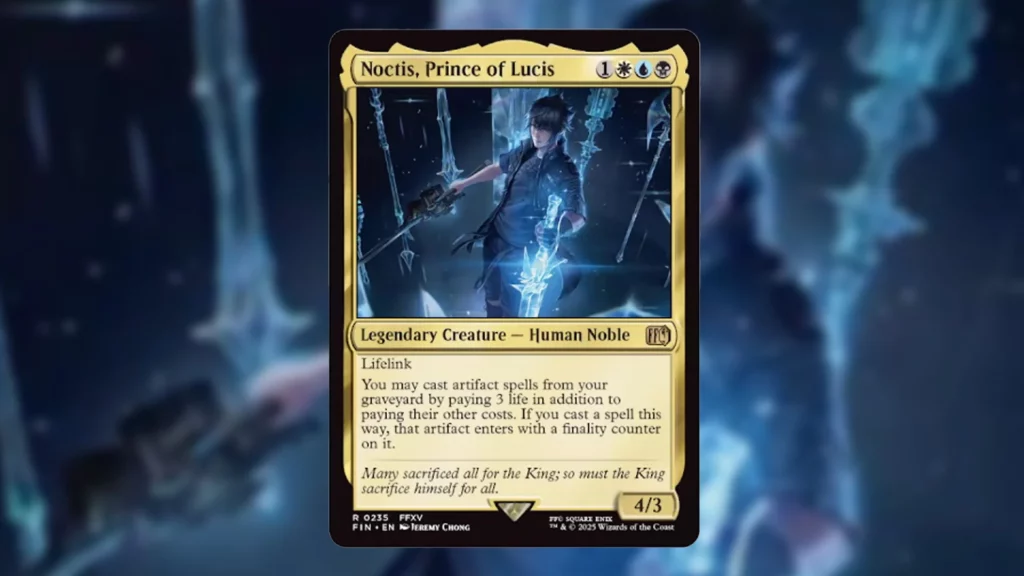
In a rare instance, we’ve saved the best for last. Noctis’s effect is really unique and powerful enough to see play even in the likes of Modern. 3 life is costly, but being able to basically resurrect all your zero-mana artifacts on impact gives Noctis a lot of play, especially in a format that commonly runs decks with eight Mox effects. Noctis does need to survive in Pioneer or Standard to create value, which makes it a bit tougher to use. In Commander and Modern, however, Noctis is a home run.

